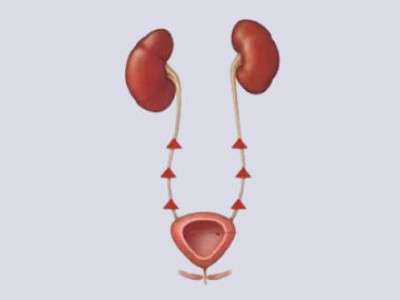Ureteral stricture is among the most common urological problems in children. In this …Read more...
Update Date: 13 Şub 2024
Ureteral stricture is among the most common urological problems in children. In this …Read more...
Update Date: 13 Şub 2024
Kidney stone disease in children can be seen in every period of childhood, even in infancy. As in adults, the incidence of kidney stone disease in children has increased considerably in recent years. Kidney stone disease was found to be more common in girls than boys.
Genetic factors, types of food consumed, inadequate treatment of infectious diseases, anatomical disorders in the urinary tract and various metabolic diseases can be explained as the reasons for the increased incidence of kidney stone disease in children.
It is not possible to completely prevent the kidney stone problem, and the possibility of stone formation can be prevented by eliminating various risk factors. It is recommended to treat the structural disorders of the urinary system and to ensure that urinary tract infections are treated adequately. Consuming healthy foods and adequate fluid intake can be effective in preventing kidney stone disease in children.
Symptoms of kidney stone disease in children are as follows:
Since the symptoms of kidney stone disease in children can be symptoms of many diseases, a qualified diagnosis is of great importance in this process. In addition to urine and blood tests, ultrasound and tomography may be needed.
The treatment of Ankara kidney stone disease in children begins with the removal of the obstruction caused by the stone in the urinary tract. In addition, if the stone has a size enough to pass through the urinary canal, it can be expected to be excreted spontaneously.
If the stone is not excreted spontaneously, it is expected to be excreted spontaneously by reducing its size (ESWL) with sound waves. In addition to these, it is possible to remove the stone by laser by entering the urinary canal and reaching the kidney, or to reach and remove the stone through a 1 cm incision on the kidney (percutaneous kidney surgery).
It is also very important to prevent the recurrence of the disease after the treatment of kidney stone disease in children. It is very important to carry out a qualified genetic and metabolic evaluation of the patient and to ensure nutrition, fluid intake and weight control in order to prevent recurrence of kidney stone disease.

facebook
instagram